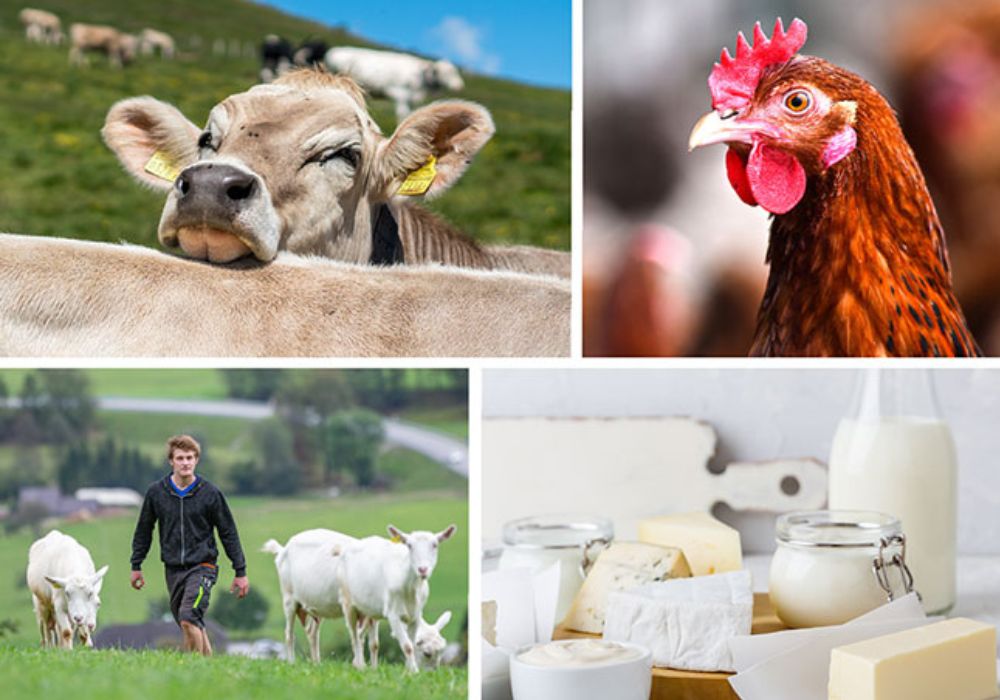
EU agricultural outlook 2020-30
EU AGRICULTURAL OUTLOOK 2020-30: SUSTAINABILITY OBJECTIVES TO IMPACT MEAT AND DAIRY ALONG THE SUPPLY CHAIN
Sustainability objectives and changing consumer demands are expected to impact EU meat and dairy markets over the coming decade. Milk production is set to grow moderately and demand for poultry projected to increase. These are just a few of the projections for the milk and meat markets from the European Union agricultural outlook for 2020-30 report published on 16 December 2020 by the European Commission
MILK AND DAIRY PRODUCTS
EU milk production is projected to grow at a moderate rate of 0.6% per annum between 2020 and 2030, at a slower rate compared to the past.
Production is set to adapt to sustainability objectives, with longer lifespans of animals, increasing carbon sequestration and more efficient manure management among the factors aimed at reducing greenhouse gas emissions per kg of milk produced by 2030. Changing consumer demands should also provide opportunities for dairy products produced in non-conventional production systems, such as pasture-based, GM-free fed, organic.
The EU is expected to remain as the world’s largest dairy exporter, as population and income growth could increase global demand for dairy products, despite an increasing self-sufficiency worldwide.
Cheese processing is projected to benefit the most from the additional milk produced, driven by both domestic and global demand: the EU is expected to account for 49% of global cheese exports in 2030. After historically high butter prices in 2017-2018, the EU butter market is due to stabilize between 2020 and 2030, supported by increasing retail sales in the EU and steady export demand.
Per capita consumption of yoghurt and cream are expected to remain stable, the former facing increasing competition from alternative dairy products which are gaining popularity (e.g. skyr) while liquid milk consumption is projected to decline at a slower rate than in the last ten years (-0.7%), thanks to segmentation of production systems.
MEAT
Sustainability concerns are expected to drive EU meat markets over the coming decade, pushing lower consumption per capita, more efficient production systems with fewer animals, and reduced exports of live animals. Overall, EU meat consumption per capita is projected to decline by 1.1 kg, reaching 67.6kg by 2030.
Following a decrease in the EU cow herd, the production of beef is expected to continue downwards. Within the EU, beef consumption is projected to decline by 0.9 kg per capita, while moderate export prospects to niche markets may offer some opportunities.
EU pigmeat production is projected to fall by 1 million t (-4.6%) between 2020 and 2030. The impact of African Swine Fever in Asia on the EU meat markets will be slowly mitigated, and by 2030 the large outflow of pigmeat to China is expected to decrease. However, the EU will remain a leading supplier of pigmeat to the global market.
The production and consumption of sheep and goat meat in the EU are expected to remain stable, while exports will remain low as Australia and New Zealand are set to retain their dominant positions on the world market.
Poultry is the only meat category whose production has expanded during the Covid-19 pandemic and the only one expected to grow between 2020 and 2030. EU consumption of poultry meat is projected to reach 24.6 kg per capita by 2030 (+1.2 kg compared to 2020), as consumers consider poultry a cheap, healthy and sustainable product. Demand is also expected to increase in a number of key export destinations.
Source: European Commission



